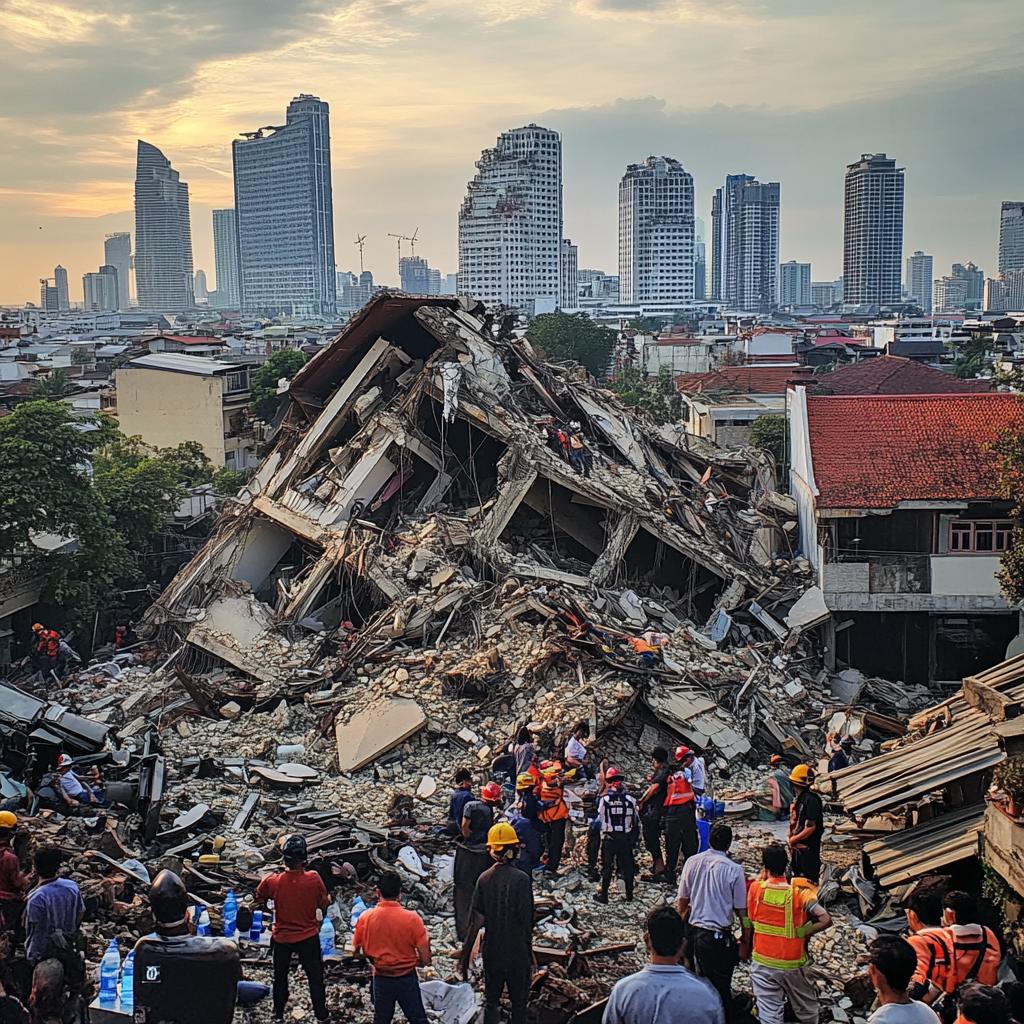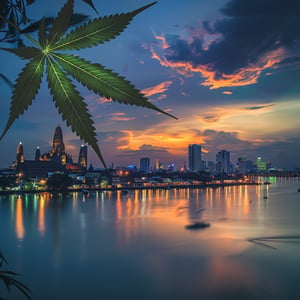In the bustling heart of Bangkok’s Chatuchak district, a once-vibrant skyline now bears the somber mark of tragic events. At the forefront of this changing landscape stands the site of a building collapse, an event that has become a rallying point for the city’s resilience and communal spirit. Amidst the chaos, a ray of hope emerges, as Singha R-SA steps forward to lend a helping hand, bringing much-needed support and, remarkably, a simple yet profound necessity—Singha drinking water.
The lifeline of refreshment arrived not just at the disaster scene, but also found its way to the corridors of Rajavithi Hospital. When Friday night rolled in, the hospital was a hive of activity following the quake, with patients being evacuated with great care. The tremor had taken a toll on the hospital’s own water production facility, making Singha’s contributions all the more vital. Doctors, nurses, and families clinging to hope for their loved ones were met with acts of kindness, one bottle of water at a time, amidst the tense backdrop of uncertainty.
As dawn broke on Saturday, transportation networks in Bangkok shuddered back to life, a symbol of the city’s indomitable spirit in the face of adversity. Nevertheless, the tall structures that define Bangkok’s skyline will remain under scrutiny, as thorough engineering inspections are mandated before they can safely welcome back the routine rhythms of business and daily life. Patience and caution will guide their reopening, a small price for safety in a city that refuses to be cowed.
The events prompting this chain of support unfolded as a powerful earthquake struck neighboring Myanmar on Friday afternoon. The 7.7-magnitude quake, its epicenter buried 10 kilometers beneath Mandalay, served as an unwelcome reminder of nature’s might. Its tremors reverberated through the region, felt as far as Thailand, China, and Vietnam, leaving paths of dismay in its wake.
Within Thailand’s borders, the quake’s impact was felt keenly across Bangkok and 10 other provinces, cascading from the south in Samut Sakhon to the northern reaches of Chiang Rai. Provinces like Chiang Mai, Phrae, Mae Hong Son, and Lampang found themselves on the Department of Disaster Prevention and Mitigation’s map of concern. Pasakorn Boonyalak, the department’s director-general, voiced the nation’s shared sorrow as he detailed the damages inflicted.
Among the most poignant tragedies, three construction sites in Bangkok bore the brunt of nature’s wrath. In one heart-wrenching incident, a 30-storey government building succumbed to the seismic forces, reducing what was a symbol of human ambition to rubble, dust, and despair. Here, as the final tally of loss began to unfold, 10 lives were gone too soon, 16 were left injured, and a cloud of uncertainty lingered over the 101 souls yet to be accounted for.
In these moments of collective grief and resilience, the familiar label of Singha drinking water emerges not merely as a commodity but as a testament to the spirit of unity in times of crisis. The city’s heart aches, yet it is precisely within these trials that communities find their strength, their resolve to rebuild what has fallen, and their resolute belief in a future that rises anew from the foundations of compassion and solidarity.


















It’s tragic to hear about the building collapse. Good on Singha for stepping up with water aid!
Water is a basic necessity, but I’m sure more help is needed. What about shelter and medical supplies?
Absolutely, there needs to be a holistic approach. Supporting infrastructure for quick mobilization should be a priority.
Why wasn’t there better planning to prevent such a disaster? These tragedies should be avoidable.
Sometimes it’s impossible to fully predict and prevent damage from natural disasters, especially earthquakes.
I get that, but shouldn’t building codes be more strict, especially in earthquake-prone areas?
This catastrophe shows our planet’s unpredictability. Nature doesn’t discriminate and that’s the scary truth.
Quite right, yet humans keep pushing the limits with our constructions. Responsible development is key.
Agreed. Maybe we do need to rethink the ways we coexist with nature.
Wasn’t it just a matter of time before such an event happened? Asia is notorious for such disasters.
That’s a bit harsh. Every region has its challenges. Empathy goes a long way in these times.
It’s not about being harsh, it’s about being realistic and prepared.
So grateful that organizations like Singha R-SA exist to provide aid. Every bottle helps.
It’s inspiring, but the government should also step up its game. Reliance on just a few companies is risky.
Definitely, a collective effort always works best in these scenarios.
Is this the same old sad story of not learning from past mistakes?
Even with planning, forces of nature can be overwhelming. We can only do so much.
Just hope we learn something from all this. It’s about growth as societies.
Maybe it’s a signal to adopt greener, more sustainable architecture. Time to change how we build.
Heartbreaking news, but thrilled to see the community spirit and support for the victims.
Singha is showing how big corporations can play a critical role during crises.
Indeed. However, it’s also the responsibility of these companies to support stronger preventive measures.
Rajavithi Hospital’s quick response deserves recognition. Healthcare staff are the real heroes here.
Why did it take a tragedy for people to come together? We need this spirit always!
Crises bring out the best in some and the worst in others. Consistent unity is a lofty goal, but worth aiming for.
With climate change, such disasters might become more frequent. Building resilience is key.
My prayers go out to those affected. Hope efforts continue until everyone is accounted for.
True. Closing the loop is important in these rescue efforts.
The government’s response time seemed slower than expected. They should do better next time.
It’s events like this that highlight the importance of engineering advancements in safety.
We should see an increase in public awareness campaigns about emergency preparedness.